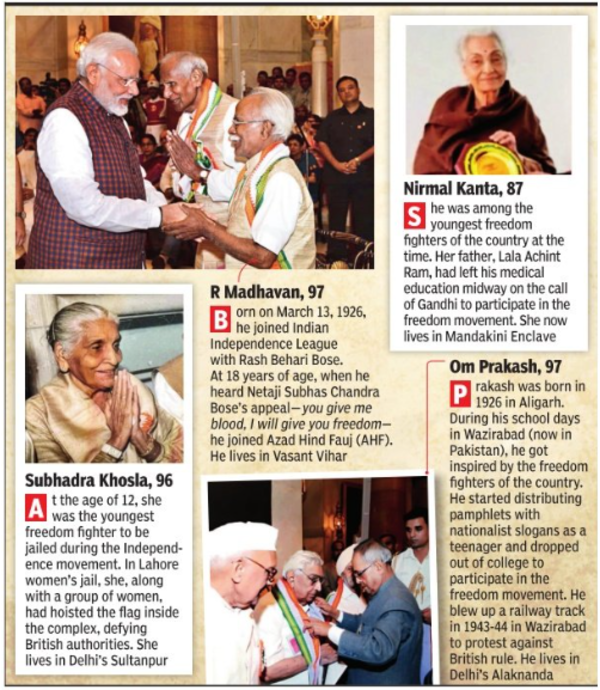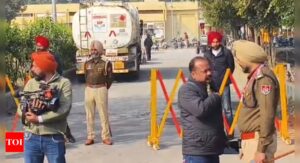Meet Delhi’s 4 remaining freedom fighters | India News – Times of India

Born on March 13, 1926, Madhavan joined the Indian Independence League as a teenager. Later, after listening to Netaji Subhas Chandra Bose appealing to Indians to “give me blood and I will give you freedom”, he joined the Azad Hind Fauz, working as its recruitment officer and fundraiser.
Madhavan collected funds from 32 places in Burma, among them Hanthawaddy, Sawbwagale, Ywadanshe, Swryan, Rangoon and Mayongone. He was jailed for six months in 1945 by the British. Now, 97 years old, he lives in Vasant Vihar in south Delhi.
In a message to TOI, he said, “Let us promise to strivefor justice, freedom and equal rights for every Indian and for peace and unity among all who are fortunate enough to live in this glorious nation.”

Om Prakash was also born in 1926, in Aligarh. During his school days in Wazirabad, now in Pakistan, he was inspired by the freedom fighters and began distributing pamphlets with nationalist slogans as a teenager. He dropped out of college to take part in the movement against the colonialist rulers. He blew up a railway track in 1943-44 in Wazirabad and was incarcerated in Multan Central Jail. There, he protested and forced the jail authorities to shift ailing freedom fighter Ram Kishan to the central jail from another jail to ensure he got medical care.
Om Prakash said, “Seeing the country progress fills my heart with joy. I feel the country is doing extremely well and has a good future.” He remembered the areas in old Delhi associated with his days as a revolutionary and said, “I like everything about Delhi.”
Subhadra Khosla was among the youngest to be jailed during the independence movement when she was imprisoned at the age of 12. When in Lahore women’s jail, she and some other women prisoners raised the Indian flag on the complex in defiance of the British. She currently lives in Sultanpur.
Khosla was also part of the movement to boycott foreign cloth and to promote khadi, showing a deep influence of Mahatma Gandhi on her family. Her sister, Nirmal Kanta, also among the youngest freedom fighters, lives today in Mandakini Enclave. Their father too had left his medical education midway to join the freedom movement at Gandhi’s call.
Delhi government gives pension and medical reimbursement to freedom fighters. An official said, “When the scheme was started, there were 592 freedom fighters. There are just four left now.” The general administration department felicitates freedom fighters at state functions and also organises events periodically to commemorate the contribution of those who fought for India’s independence from colonial rule.






